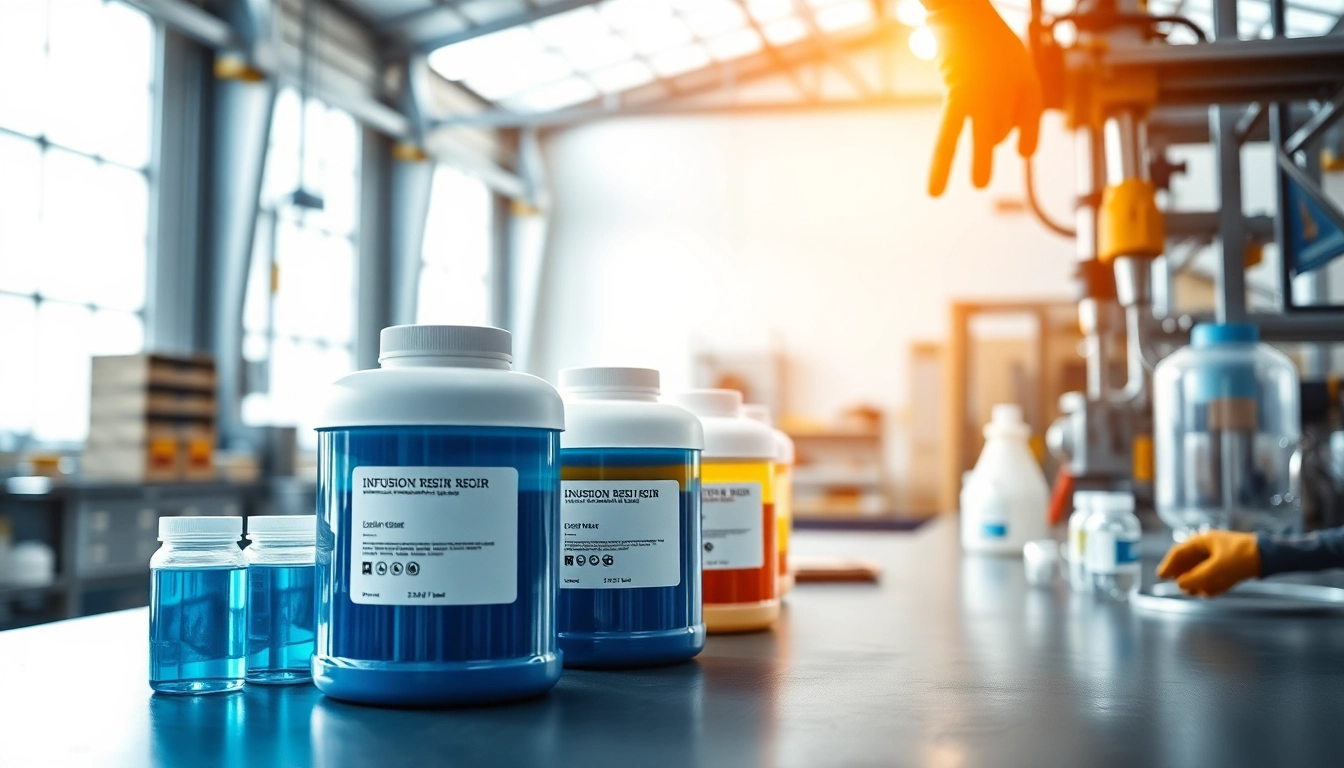
Understanding Infusion Resins
What Are Infusion Resins?
In the realm of composite manufacturing, infusion resins play a crucial role in creating high-performance materials. These resins are specifically formulated for use in infusion processes where the goal is to achieve a strong, lightweight product with superior structural integrity. Through a method known as vacuum infusion, these low-viscosity resins are drawn into a fibrous substrate under vacuum conditions, allowing for thorough saturation without trapped air pockets.
Key Properties of Infusion Resins
Infusion resins are characterized by several key properties that make them ideal for advanced applications:
- Low Viscosity: This allows the resin to flow freely through fibrous materials, ensuring uniform distribution and reduced void content.
- High Strength: The cured resin exhibits excellent mechanical properties, making it suitable for structural applications in aerospace, automotive, and marine industries.
- Durability: Infusion resins are formulated to withstand various environmental conditions, offering long-lasting performance.
- Clarity: Many infusion resins maintain transparency, allowing for aesthetic applications where visual appeal is vital.
Applications and Use Cases
Infusion resins are employed in various industries and applications, ranging from construction to high-tech manufacturing:
- Aerospace: Used to manufacture lightweight, high-strength components such as fuselage sections and wing structures.
- Automotive: Ideal for producing parts that require a high strength-to-weight ratio, such as chassis and body panels.
- Marine: Widely utilized for boat hulls and components due to their ability to resist corrosion and moisture.
- Sports Equipment: Infusion resins are often used in the production of equipment like surfboards, bicycles, and golf clubs, where performance is crucial.
Benefits of Using Infusion Resins
Improved Strength and Durability
One of the primary advantages of utilizing infusion resins is the enhanced strength and durability they provide. The infusion process allows for a more efficient integration of resin with the reinforcement fibers, leading to stronger bond formations and overall structural integrity. With proper formulation, infusion resins can significantly outperform traditional resin methods.
Enhanced Clarity and Aesthetics
Infusion resins are not only functional but can also enhance the cosmetic appeal of the final product. The ability to achieve a clear, glossy finish without the need for additional coatings makes them preferred for applications where aesthetics are critical. This feature is particularly beneficial in industries such as marine and consumer goods, where visual appearance can impact consumer choice.
Controlled Flow for Precision Molding
The controlled flow characteristics of infusion resins allow for precise molding processes, ensuring that the resin reaches every area of the substrate evenly. This minimizes the risk of dry spots and voids that can compromise the integrity of the finished product. Moreover, this precision contributes to reduced waste and improved efficiency in production processes, making infusion resins a cost-effective choice for manufacturers.
Choosing the Right Infusion Resins
Factors to Consider When Selecting
When choosing the right infusion resin for a specific application, several factors should be taken into account:
- Viscosity: Select a resin with appropriate viscosity that matches your fiber layup and application requirements.
- Cure Time: Consider the pot life and cure time; balancing these will help optimize production schedules.
- Mechanical Properties: Determine the required strength and stiffness based on the end-use application.
- Environmental Resistance: Choose formulations that resist environmental factors relevant to the application, such as moisture and UV exposure.
Comparative Analysis of Options
There are various formulations and types of infusion resins available on the market, each tailored for specific use cases. For example, some resins are optimized for high-temperature applications, while others cater to low-density requirements. Conducting a comparative analysis of key properties, including viscosity, cure time, and impact resistance, can help users select the best resin for their particular needs.
Common Pitfalls to Avoid
When working with infusion resins, there are common pitfalls that manufacturers should strive to avoid:
- Not conducting proper surface preparation can lead to poor bonding between the resin and substrate.
- Ignoring the effects of temperature and humidity on the resin cure process can result in unpredictable outcomes.
- Failing to adequately test the resin properties before large-scale application can lead to product failures.
Application Techniques for Infusion Resins
Step-by-Step Infusion Process
The resin infusion process involves several methodical steps to ensure successful application:
- Preparation: Prepare the mold surface with appropriate release agents and ensure it is clean.
- Fiber Layup: Lay out the reinforcement materials in the mold as per the design specifications.
- Vacuum Setup: Seal the mold with vacuum bagging materials; a proper seal is essential to create vacuum pressure.
- Resin Injection: Using a resin injector, carefully introduce the infusion resin while monitoring the vacuum pressure.
- Curing: Allow the resin to cure as per the manufacturer’s recommendations before demolding.
Best Practices for Successful Applications
To achieve optimal results when working with infusion resins, consider the following best practices:
- Always conduct a test run on a sample part to ensure compatibility and desired performance.
- Monitor the ambient conditions closely during the curing process; aim for consistent temperature and humidity.
- Ensure that all equipment is compliant and functioning properly to prevent contamination and improve quality control.
Tools and Equipment Required
The successful application of infusion resins demands specific tools and equipment:
- Vacuum Pumps: Essential for creating the necessary vacuum to draw the resin into the fibers.
- Resin Injectors: Used to control the flow of resin, ensuring even saturation of the materials.
- Molds: High-quality molds are crucial for shaping and validation of the final product.
- Measuring Tools: For precise measurement of materials and resin components to maintain ratios.
Future Trends in Infusion Resins
Emerging Technologies in Composite Manufacturing
As technology evolves, so do the methods and materials used in composite manufacturing. Infusion resins are not immune to these changes. Emerging technologies such as automation in resin infusion processes and advancements in materials science are setting the stage for future possibilities. Innovations are expected to introduce smarter resins that adapt to environmental conditions, enhancing performance and ease of processing.
Sustainability Considerations
The push for sustainability has also influenced the development of infusion resins. Manufacturers are increasingly focused on creating bio-based and recyclable resins that do not compromise performance. This trend is driven by the need to reduce waste and environmental impact in composite manufacturing, offering new market opportunities for eco-friendly infusion resins.
Market Insights and Predictions
The global market for infusion resins is projected to grow as demand rises in key sectors such as aerospace, automotive, and renewable energy. Market analysts predict an increase in investments towards innovative resin formulations that enhance performance while addressing sustainability challenges. The composite materials sector is poised for growth, driven by advancements in technology, materials, and market dynamics that favor lightweight, strong components.





